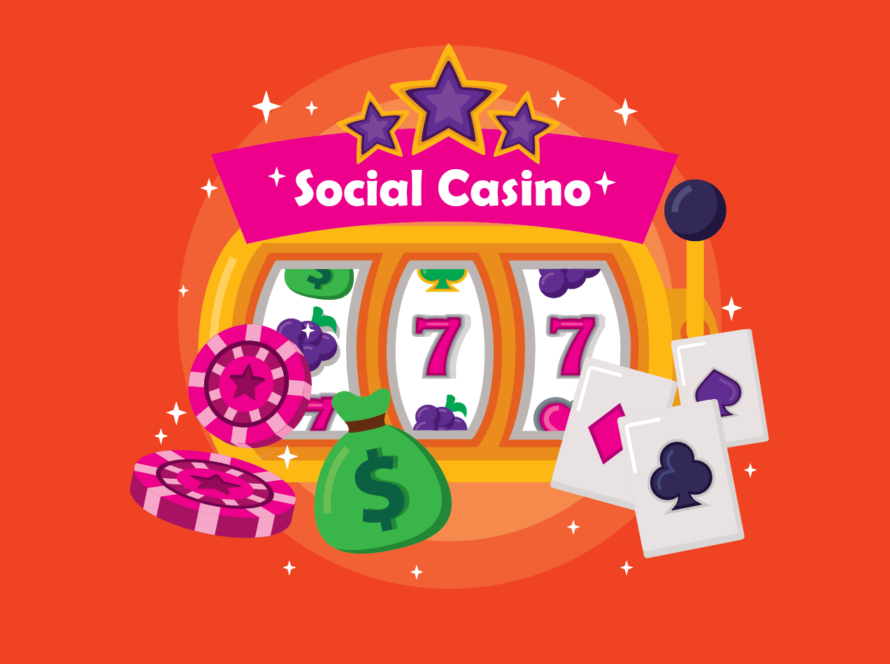In a fast-growing industry like social casino gaming, where players are presented with an ever-increasing number of options, having a compelling Unique Selling Proposition (USP) is crucial for establishing a brand’s identity and standing out from the crowd. But a successful USP is not a one-time achievement. In the social casino space, evolving market trends, shifting player expectations, and rapid technological advancements mean that brands must continuously refine and innovate their USPs to maintain player interest and profitability. In this article, we’ll explore why a strong USP is essential, examine the challenges in sustaining it, and highlight real-world examples that demonstrate the power of a well-maintained USP.
The Importance of a Unique Selling Proposition (USP)
A USP is the element that clearly sets a brand apart from its competitors. In the social casino gaming industry, where countless options exist, a unique and memorable USP is the first step to capturing players’ attention. However, creating a USP is only part of the puzzle—keeping it relevant and aligned with evolving player preferences is essential for sustained success.
Differentiating in a Crowded Market
The global social casino market is projected to reach $8 billion by 2025, driven by the rising demand for digital entertainment. But despite its growth, the market is heavily saturated, with established giants holding significant market share. New entrants face intense competition, so simply having a USP is not enough. Successful social casinos not only differentiate themselves initially but continuously adapt their USPs to remain appealing over time. The social casino landscape is a game of innovation; those who fail to stay relevant risk becoming obsolete.
Building and Sustaining Trust and Loyalty
Social casinos rely on in-app purchases, not gambling winnings, to generate revenue. Transparency and ethical design, combined with a continuously refined USP, help build trust and foster loyalty. For example, social casinos that emphasize fair play and create a community-driven experience resonate with players who prioritize fun, fairness, and connection.
Understanding Market Trends and Data
The foundation of a sustainable USP is understanding market trends and leveraging player data. Social casinos that monitor user behavior, identify shifting player preferences, and incorporate these insights into their USP are better positioned to maintain relevance. Analyzing metrics such as daily active users (DAUs), session length, and player churn enables developers to fine-tune their offering and stay competitive.
Why Not All Social Casinos Make Money
The potential for high returns in social casinos is undeniable, but profitability is far from guaranteed. Many platforms struggle with challenges that require a dynamic approach to their USP to address.
High Competition and Market Saturation
With thousands of social casino games available on app platforms, competition is fierce. Many new games struggle to differentiate themselves from well-known brands like Zynga Poker, Coin Master, or Slotomania, which have massive marketing budgets and loyal audiences. Without a fresh and evolving USP, newer social casinos may struggle to gain market share and become profitable.
User Acquisition Costs and Retention Challenges
Social casino games heavily rely on in-app purchases, which requires high volumes of active users. The cost of acquiring these users can be prohibitive. With CPIs (costs per install) for social casino games ranging from $5 to $10, brands need a solid USP and strategy to attract high-quality users. Retaining these users over time is equally challenging. Metrics indicate that 30% of players abandon social casino apps within the first seven days, a sobering statistic for games without engaging, innovative features to keep players coming back.
The Highs and Lows of Launching a Social Casino Game
Launching a social casino game brings both promising growth opportunities and significant challenges. While some brands achieve success quickly, others face difficulties in sustaining engagement and profitability over the long term.
The Highs: Success Stories and Revenue Potential
Some social casinos have achieved massive success and profitability by constantly innovating their USPs. For example, Coin Master tapped into a unique combination of social casino mechanics with casual mobile game elements. By allowing players to “attack” and “raid” other players’ villages, Coin Master created a social and competitive element that set it apart from traditional slot games. This innovative approach to a USP attracted millions of players and became a blueprint for hybrid social casino games, demonstrating the importance of creativity in building a lasting presence in the market.
Similarly, Chumba Casino, launched by VGW, pioneered a “sweepstakes” model for social casinos in the U.S., where players could win cash prizes legally without gambling. This innovative take on the social casino model appealed to players interested in real prizes without traditional gambling. By identifying an underserved market and adapting their USP to regulatory constraints, Chumba Casino found significant success and continues to stand out in the market.
The Lows: Financial Strain and User Acquisition Challenges
For every success, there are many social casinos that struggle to gain traction, leading to financial losses. Research indicates that up to 80% of new mobile games, including social casinos, fail to make it past their first two years. The high costs of marketing, along with poor user retention and lack of a continuously evolving USP, can lead to early shutdowns. Social casinos that fail to adapt to player expectations often see declining engagement, making it difficult to cover acquisition costs and achieve profitability.
Emotional Toll on Founders and Teams
Launching a social casino game requires constant innovation and close monitoring of player behavior and preferences. The uncertainty of user acquisition, combined with the pressure to develop fresh content, can take a toll on founders and teams. Social casino development is a high-stakes environment where burnout is common.
Case Studies of Social Casino Games with Adaptive USPs
Below are examples of social casinos that have not only succeeded in creating a compelling USP but have also adapted it over time to remain competitive.
1. Slotomania: Sustaining its Position Amidst Increasing Competition
Slotomania, one of Playtika’s flagship products, revolutionized the social casino market by adding community-driven features to traditional slot games. But maintaining this leadership position has proven challenging. In Q2 2024, Slotomania’s revenue declined by 7.5% year-over-year to $133.8 million, highlighting the impact of increased competition and evolving player expectations. Many players now seek more diverse, interactive gaming experiences. To adapt, Playtika has invested in new features and targeted re-engagement campaigns. However, ongoing market saturation and regulatory changes require Slotomania to keep evolving its USP to stay relevant.
2. Coin Master: A Hybrid Model with Social and Competitive Play
Coin Master, developed by Moon Active, combined social casino mechanics with competitive mobile game elements. This hybrid model, which lets players attack and raid each other’s virtual villages, has been instrumental in attracting a diverse player base that includes both casino and casual gamers. Coin Master’s unique USP has kept it at the top of the app charts, generating over $1 billion in revenue. By consistently adding new features and events to keep gameplay fresh, Coin Master has managed to maintain high engagement and extend the lifespan of its player base.
3. Chumba Casino: Innovating with a Sweepstakes Model
VGW’s Chumba Casino introduced a groundbreaking approach to social casinos by offering a “sweepstakes” model, where players can win real cash prizes without traditional gambling mechanics. This USP not only attracted players interested in the possibility of real winnings but also allowed Chumba to operate in markets where real-money gambling is restricted. By identifying this niche, Chumba created a legal and compelling alternative to traditional social casinos, helping it capture a loyal user base. The brand continues to evolve its offering to ensure it remains compliant and appealing to users who seek a unique, prize-driven experience.
Real-World Stats on Profitability and Margins in Social Casino Gaming
Understanding the profitability and margins in social casino gaming provides context for the industry’s challenges and opportunities.
Gross Margins
Established social casino games typically operate with gross margins of 40-60%. Slots, the most popular genre in social casinos, yield higher margins due to their gameplay mechanics, which enable lower in-game payouts and increase revenue from in-app purchases.
Retention Rates
Retention rates vary, but successful social casino games have demonstrated strong performance in keeping users engaged. According to a 2022 report by Sensor Tower, the average 30-day retention rate for top social casino games was around 25%, which is significantly higher than most other mobile gaming genres.
User Acquisition Costs and ROI
With high user acquisition costs, social casino games face the challenge of maintaining strong ROI. According to an industry analysis by Eilers & Krejcik Gaming, top-performing social casino games often see ROIs of 4:1 or higher on ad spend, though new entrants may struggle to achieve these returns without a strong, continuously evolving USP.
The importance of USP will lead to longevity
In the competitive world of social casino gaming, a compelling and adaptive USP is essential. The examples of Slotomania, Coin Master, and Chumba Casino highlight the importance of not only differentiating at launch but also continuously evolving to stay relevant. Slotomania’s recent challenges underscore that a USP must be nurtured and innovated upon to align with changing player preferences and market conditions.
With a solid understanding of data, trends, and ongoing innovation, social casino games can maintain relevance, attract loyal players, and navigate the challenges of this competitive landscape. As these examples illustrate, an evolving USP, rather than a static one, is the true cornerstone of long-term success in the social casino industry.


